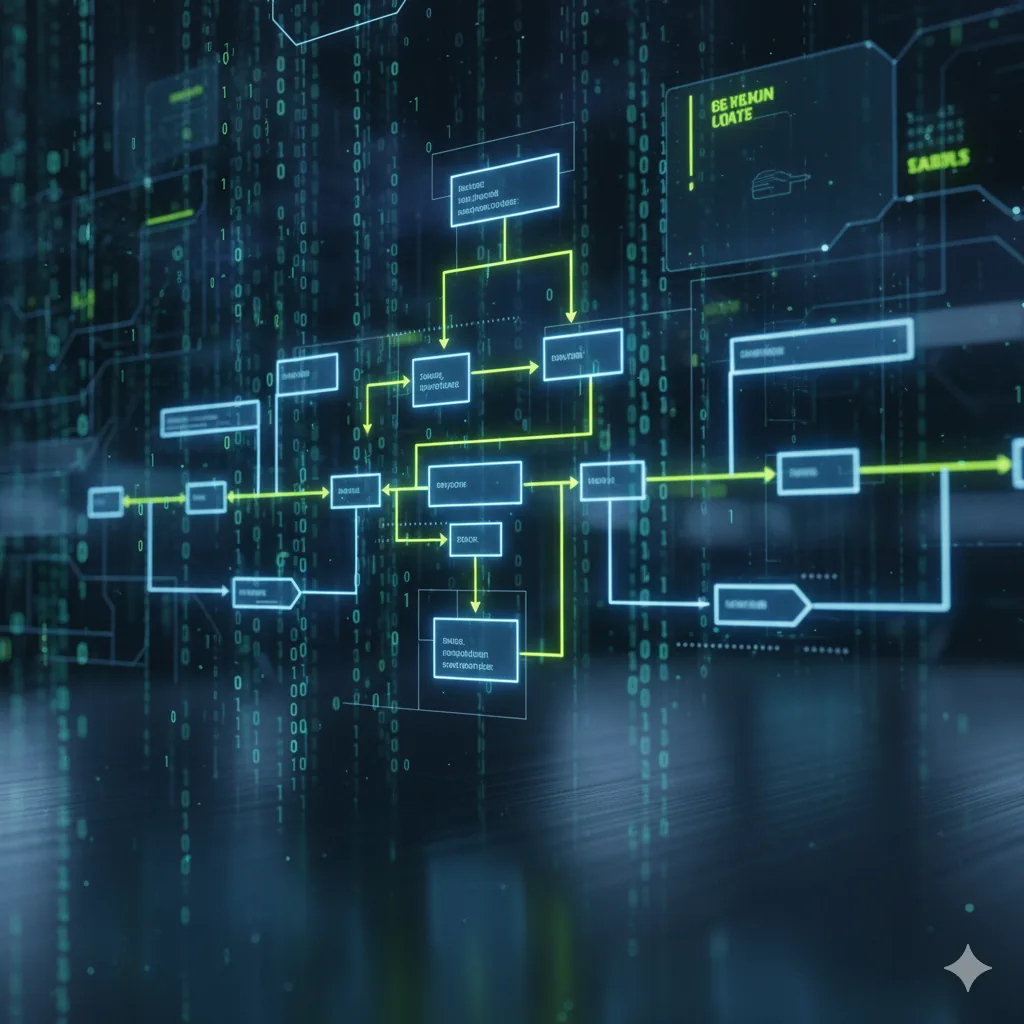System Integrations and APIs for Enterprises

In today's business environment, enterprises use dozens of different systems - from CRM and ERP, through marketing tools, to accounting and warehouse management systems. Each of these systems stores critical business data, and their isolation leads to information duplication, errors, and loss of efficiency.
Professional system integrations via APIs (Application Programming Interfaces) are the key to automating data flow, eliminating manual work, and ensuring information consistency across the entire organization. In this article, I'll discuss the most important aspects of system integrations for enterprises and show practical examples of using various technologies.
System Integration Challenges for Enterprises
Enterprises face many challenges when integrating different IT systems. Understanding these problems is the first step toward solving them effectively.
Key Integration Challenges:
- ▸Data silos - information isolation in different systems leads to outdated data and lack of a single source of truth
- ▸Different communication protocols - legacy systems often use outdated standards (SOAP, XML-RPC), while modern applications prefer REST or GraphQL
- ▸Lack of API documentation - many corporate systems don't have good documentation, making integration implementation difficult
- ▸Real-time data synchronization - ensuring data consistency between systems requires thoughtful architecture and monitoring
- ▸Security and authorization - protecting sensitive data during exchange between systems (OAuth 2.0, JWT, API keys)
- ▸Scalability and performance - integrations must handle growing data volumes without performance degradation
The solution to these challenges is applying modern architectural patterns and API technologies that enable flexible and scalable system connections while maintaining security and performance.
RESTful API vs GraphQL - Which Standard to Choose?

Choosing the right API technology is crucial for integration success. The two most popular approaches are REST (Representational State Transfer) and GraphQL - each has its strengths and optimal use cases.
🔄REST API
Mature standard based on HTTP protocol using standard methods (GET, POST, PUT, DELETE). Ideal for simple CRUD integrations.
- • Easy to implement and debug
- • Excellent cacheability (HTTP caching)
- • Wide adoption and tooling support
- • Standard HTTP status codes
- • Over-fetching/under-fetching of data
- • Multiple requests for complex queries
- • Lack of query flexibility
⚡GraphQL
Modern API query language created by Facebook. Allows clients to precisely specify what data they need, eliminating over-fetching.
- • Single endpoint for all queries
- • Precise data fetching
- • Strong typing and auto-generated docs
- • Real-time data (subscriptions)
- • Steeper learning curve
- • More difficult caching
- • Potential performance issues (N+1)
💡When to choose REST vs GraphQL?
Use REST when: integrating simple CRUD systems, you need easy HTTP caching, the team prefers proven solutions, or connecting with legacy systems.
Use GraphQL when: you have complex data relationships, frontend needs different views of the same data, you want to avoid over-fetching, or building a modern mobile app with limited bandwidth.
Data Flow Automation
Manual data transfer between systems is a waste of time, source of errors, and bottleneck for business scaling. Data flow automation eliminates these problems and allows teams to focus on valuable work.
🔔Webhooks - Event-Driven Integration
Webhooks are HTTP callbacks that allow systems to notify each other about events in real-time. When something changes in system A (e.g., new customer in CRM), it sends a POST request to system B with event information.
{
"event": "customer.created",
"timestamp": "2025-01-20T10:30:00Z",
"data": {
"customer_id": "CUS-12345",
"email": "john.smith@company.com",
"company": "ACME Corp",
"value": 50000
}
}Use cases: Synchronizing contacts between CRM and email marketing system, notifying about new orders, updating inventory levels.
📨Message Queues - Asynchronous Processing
Message queues (RabbitMQ, Azure Service Bus, AWS SQS) enable asynchronous data exchange between systems. Producer sends a message to the queue, and consumers process them at their own pace, increasing reliability and scalability.
- • System decoupling
- • Traffic spike handling
- • Guaranteed delivery
- • Load balancing
- • Retry mechanisms
- • Bulk invoice processing
- • Report exports
- • B2B system integration
- • Order processing
⏱️Scheduled Jobs - Periodic Synchronization
For data that doesn't require real-time synchronization, scheduled jobs (CRON, Azure Functions Timer Trigger) are a simple and effective solution. Regular, automatic data transfer between systems at specified intervals.
Example: Nightly product synchronization from wholesaler to e-commerce, daily transaction import from payment system to accounting, weekly sales reports from ERP to BI.
Microservices and Distributed Architecture

Microservices architecture is an approach where an application consists of small, independent services communicating through APIs. Each microservice is responsible for a specific business domain and can be developed, deployed, and scaled independently. Learn more about this architecture in the article Microservices vs Monolith in 2025.
Key Features of Microservices Architecture:
Each microservice manages its own database, eliminating single point of failure and allowing optimal solution selection for each domain (SQL for transactions, NoSQL for catalogs).
Changes in one service don't require rebuilding the entire application. CI/CD pipeline for each microservice enables fast iterations and risk reduction.
Scale only the components that need it. If search is the bottleneck, scale only the search service, not the entire application.
Failure of one service doesn't bring down the entire system. Circuit breaker patterns and graceful degradation ensure resilience.
Microservices Architecture Challenges:
Microservices introduce operational complexity - tools for orchestration (Kubernetes), service mesh (Istio), distributed tracing (Jaeger), centralized logging (ELK stack), and monitoring (Prometheus, Grafana) are needed. Learn Kubernetes basics in our beginner's guide.
Distributed transactions and eventual consistency require thoughtful design and implementation of patterns such as Saga pattern or Event Sourcing. See also how we implemented this architecture in the multi-tenant SaaS project.
Example: CRM and ERP Integration

Systems integration architecture
Here's a practical example of integrating a CRM (Customer Relationship Management) system with an ERP (Enterprise Resource Planning) system for a medium-sized manufacturing company. This is one of the most common enterprise integrations.
📊 Business Scenario
The company uses CRM for customer and sales management (e.g., Salesforce, HubSpot) and ERP for managing orders, warehouse, and finances (e.g., SAP, Microsoft Dynamics). Systems work in silos, leading to data duplication and delays.
- ✓ Automatic customer contact synchronization from CRM to ERP
- ✓ Passing orders with "Won" status from CRM to ERP as proforma invoices
- ✓ Order status updates in CRM based on ERP data (in progress, shipped, delivered)
- ✓ Inventory level synchronization from ERP to CRM for better customer service
- ✓ Automatic customer account creation in financial system
🔧 Solution Architecture
Implementation based on middleware integration layer (Azure Functions / AWS Lambda) as an intermediary between CRM and ERP. Learn more about choosing a cloud platform in our article on Azure, AWS, and GCP cloud solutions:
1. CRM → Middleware (Webhooks)
CRM sends webhook on every contact change or deal status. Middleware receives event, validates data and transforms to ERP format.
POST https://api.company.com/webhook/crm
{
"event": "deal.won",
"deal_id": "D-789",
"customer": {
"name": "ACME Corp",
"tax_id": "1234567890",
"email": "orders@acme.com"
},
"value": 25000,
"products": [...]
}2. Middleware → ERP (REST API)
Middleware calls ERP REST API, creating an order. In case of error, message goes to dead letter queue and retry mechanism.
POST https://erp.company.com/api/v2/orders
Authorization: Bearer {token}
{
"customer_code": "CUS-12345",
"order_date": "2025-01-20",
"items": [...],
"total_amount": 25000,
"external_ref": "CRM-D-789"
}3. ERP → CRM (Scheduled Polling)
Scheduled job (every 15 min) fetches order statuses from ERP and updates corresponding deals in CRM via API.
// Azure Function Timer Trigger - cron: */15 * * * *
GET /api/v2/orders?updated_since={last_sync}
→ PATCH /crm/api/deals/{id} with status update✅Business Results
- • 90% time reduction in order processing (from 2h to 12 min)
- • Error elimination from manual data entry
- • Real-time visibility of order status for sales team
- • Automatic synchronization of over 500 contacts daily
- • Better customer service through access to inventory levels
Technologies and Tools
API Development
- • REST: ASP.NET Core Web API, Express.js, FastAPI
- • GraphQL: Apollo Server, Hot Chocolate (.NET)
- • Documentation: Swagger/OpenAPI, GraphQL Playground
- • Testing: Postman, Insomnia, REST Client
Integration Platforms
- • Cloud: Azure Functions, AWS Lambda, Google Cloud Functions
- • Message Queues: RabbitMQ, Azure Service Bus, AWS SQS
- • iPaaS: Zapier, Make (Integromat), n8n
- • API Gateway: Azure API Management, Kong, AWS API Gateway
Security & Auth
- • Authentication: OAuth 2.0, OpenID Connect
- • Authorization: JWT tokens, API keys, mTLS
- • Security: Rate limiting, CORS, WAF
- • Secrets: Azure Key Vault, AWS Secrets Manager
Monitoring & Observability
- • APM: Application Insights, New Relic, Datadog
- • Logging: ELK Stack, Azure Monitor, CloudWatch
- • Tracing: Jaeger, Zipkin, OpenTelemetry
- • Metrics: Prometheus, Grafana
Related Articles
SignalR and Real-Time Apps
Learn how to implement real-time communication in web applications using SignalR and WebSockets.
Multi-Tenant SaaS in .NET
SaaS application architecture with data isolation and microservices in the .NET ecosystem.
Microservices vs Monolith 2025
Comprehensive comparison of microservices and monolithic architectures - when to choose which?
Case Study: Kinetiq Platform
Practical example of building an integration platform connecting multiple systems in one architecture.
Best Practices for Enterprise Integration
1. Document your APIs
Use OpenAPI/Swagger for REST or schema introspection for GraphQL. Good documentation is key to fast adoption and support reduction.
2. Version APIs from day one
Use semantic versioning (v1, v2) in URL or header. Breaking changes require a new version. Support older versions for a defined period.
3. Implement rate limiting and throttling
Protect backend from overload. Use sliding window or token bucket algorithms. Return 429 Too Many Requests with Retry-After header.
4. Monitor everything
Track metrics: response time, error rate, throughput. Set alerts for anomalies. Use distributed tracing for microservices.
5. Design for failure
Implement retry logic with exponential backoff, circuit breakers, timeout policies. Use idempotent operations where possible.
6. Secure sensitive data
Encrypt data in transit (TLS) and at rest. Don't log sensitive data. Use API key rotation. Implement RBAC (Role-Based Access Control).
Need Integration for Your Company?
We specialize in designing and implementing secure, scalable system integrations for enterprises. From simple REST API connections to advanced microservices architectures with event-driven communication.
References
- [1] Microsoft Azure - Official Documentation -https://learn.microsoft.com/en-us/azure/
- [2] Microsoft Learn - Azure Training Center -https://learn.microsoft.com/en-us/training/azure/
- [3] Kubernetes - Official Documentation -https://kubernetes.io/docs/
- [4] CNCF Annual Survey 2023 - State of Kubernetes Adoption -https://www.cncf.io/reports/cncf-annual-survey-2023/
- [5] .NET - Official Microsoft Documentation -https://learn.microsoft.com/en-us/dotnet/
- [6] .NET Blog - Latest updates and best practices -https://devblogs.microsoft.com/dotnet/
- [7] AWS - Official Documentation -https://docs.aws.amazon.com/
- [8] Google Cloud - Official Documentation -https://cloud.google.com/docs